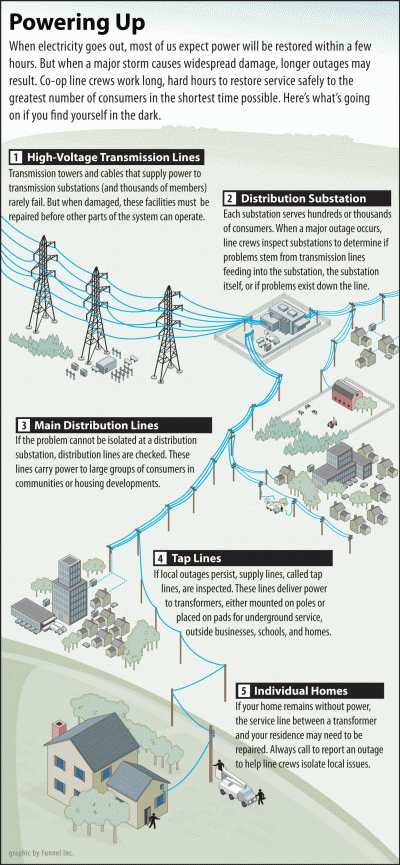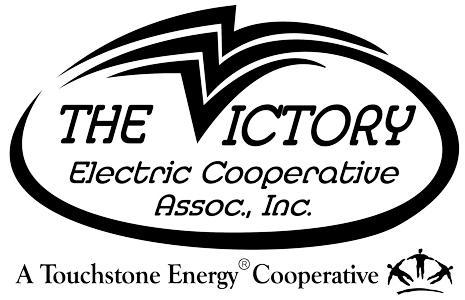If you are experiencing a power outage, please call our office at 620-227-2139 or 800-279-7915. Thank you!
Steps to Restoration

Keeping the power flowing
Electricity makes our homes comfortable and is always ready with a flip of a switch. But behind the scenes, cooperative lineworkers work tirelessly to maintain a complex system of power lines.
The power grid is an intricate network that has evolved over the last century to provide safe, reliable, and affordable electricity. Unlike water or gas, electricity must be used or moved immediately after it's produced, traveling at the speed of light along the path of least resistance.
Millions of miles of power lines span the United States, divided into transmission lines (high-voltage "interstates") and distribution lines (local roads). Electric cooperatives power 56% of the nation's landmass, maintaining 2.6 million miles of distribution lines and serving 42 million people. Victory Electric alone maintains over 3,170 miles of lines, ensuring they are operational 24/7.
During a power outage, pinpointing the cause among thousands of miles of lines can be challenging. Our crews work to fix the biggest problems first, prioritizing repairs according to how they can restore service to get the most homes back in service the fastest. If there's an outage in your area, you can help by calling us at 800-279-7915. Every bit of information helps us get the power flowing smoothly again.
